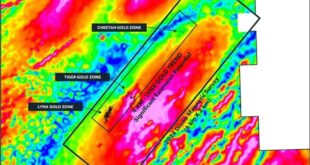Mayor Adams likes to take on the role of innovator, from the head-scratching, like taking his first paychecks in cryptocurrencies, to the genuinely useful, like his push for a unified portal for city services. That’s also stretched to his other favorite topic, public safety, around which he’s spoken admiringly about facial recognition technologies and other potent tools. During his trip to Israel — a country surrounded by military enemies — he hinted at taking tips, including police use of drones.
We can’t and won’t say categorically that the various surveillance technologies Adams seems to have some affinity for are bad or good, useful or useless, simply that most are serious expansions of police capability that certainly have the potential for misuse. The public shouldn’t find out about their adoption from the triumphant press conference, as was the case with the NYPD’s robot dogs and GPS guns.
It’s fine for most city agencies and departments to make their procurement decisions in relative obscurity — the make and model of the city’s paper clips doesn’t need to be the subject of robust debate so long as we’re more or less getting the most bang for our buck — but the NYPD is different. It is the department whose staff New Yorkers are most likely to encounter in day-to-day interactions, and who have the most direct authority. Only the cops make arrests.
A proper model of public safety rests on the idea that the police protect the public, and the public in turn has some guardrails in place to constrain a force with extraordinary power, including the monopoly on the use of force.
The argument of “who cares if what all this is used for is to catch bad guys” ignores that the definition of who exactly constitutes “bad guys” is malleable and often questionable. The NYPD has had some notable missteps and abuses of surveillance, perhaps most infamously the efforts to mass-surveil Muslim Americans, which it eventually admitted had produced zero intelligence leads and was forced to dismantle, but which nonetheless helped irreparably damage trust with that community. Had the cops had even more sophisticated tools, it follows that they would have used these tools to further this unconstitutional mission.
This would be less of a concern for a department that had a clear record of self-regulating and fomenting transparency, but unfortunately the NYPD has struggled there, too.
Just in the past week, there have been revelations that more than 100 cops were flagged for a second time in a row by an NYPD program designed to identify patterns of misconduct; that investigators allowed multiple officers to make misstatements in a friendly fire investigation despite having contradictory video footage; and that the department ousted its risk management chief after he raised concerns over a lack of transparency by the new plainclothes Community Response Team units and the skyrocketing level of extremely dangerous vehicle pursuits.
That’s not the conduct of a department that automatically deserves the benefit of the doubt when it comes to receiving powerful additional capabilities and free rein to use them. If it really needs new tools it should say why and how it will regulate misuse before it even thinks about making a purchase. It owes that to New Yorkers.
 Unmanned Aerial Vehicle The latest drone news
Unmanned Aerial Vehicle The latest drone news



